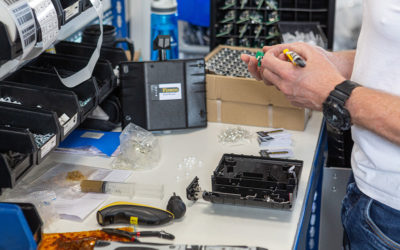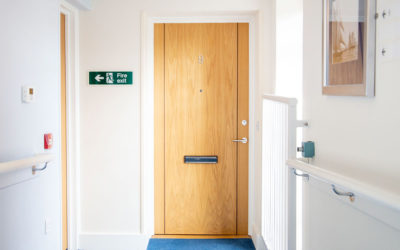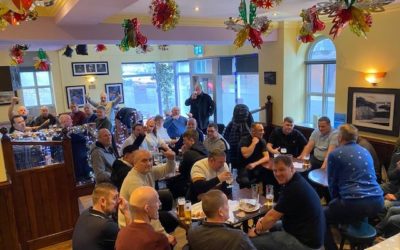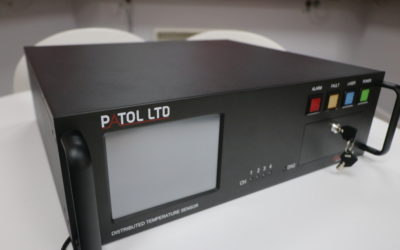The Internet of Things (IoT) has been used for commercial applications for some time now and is quickly becoming a popular tool within the fire industry. By using a series of connected devices, data can be gathered to help perform various functions and can be shared easily with relevant parties. As manufacturers start looking at how IoT can be applied to their products and services, there are many in the industry that are looking to this technology as the future of life safety systems.
As with all new technologies applied in the fire industry, the IoT needs to be scrutinised so that best practices can be recorded to make sure that things are safe and don’t add any unnecessary risk. To this end, in October 2021, the FIA (Fire Industry Association) gathered its members to participate in a roundtable webinar for its Internet of Things Forum called ‘The Fire Safety and IoT Masters Academy.’ This served as an introduction to the Academy whilst creating an opportunity to “build knowledge and better understand the market.”
Subjects up for discussion were:
- The new legislation from the IoT perspective for domestic fire and CO alarms and what this means for the industry
- The main challenges companies face when it comes to meeting the new requirements and shifting consumer demands for connected products – from production and assembly right through to product safety
- The key drivers for, and blockers to, the adoption of IoT technology
- How the industry is evolving
“IoT is a tiger that needs to be grabbed by the tail.”
The main reason the Academy started is for the BSI (British Standards Institution) to liaise with FIA members in light of imminent Government cybersecurity and IoT legislation. As things stand, there’s nothing in place for cybersecurity, hence the forthcoming regulation. Despite its importance, 79% of attendees were unaware of the forthcoming changes.
The point of this particular panel was to identify key issues and obstacles, and find the best ways of moving forward: Both professional and domestic end-user installation has to be considered.
Consumer regulation in this area is also coming. David Mudd of the BSI has been working with the Government on best practice here, which will be the baseline for setting up products and devices.
Due to an increasing wave of cyberattacks, combined with an overall lack of cybersecurity, the forthcoming IoT measures will become mandatory. It is felt that overall there is denial that cyberattacks are happening or pose a threat, so the webinar was a timely reminder that anything developed for good can also be developed for bad. The bottom line is that IoT devices are vulnerable to having their data attacked as well as having their gateways to other connected devices being compromised.
But there are challenges ahead. Many IoT devices are all about connectivity and aren’t designed to be secure, making retrofitting difficult. With regulation, security is important but so is functionality, resilience and integrity of connection and communication.
It’s felt that with IoT there’s pressure on manufacturers to keep reinventing but there has to be a stable rock to build on, as opposed to stealing a march on competitors with new devices.
Smoke detectors were used as an example. Once they were a stand-alone device; now they still have to do their job as long as IoT doesn’t interfere with that original functionality. It’s like an extra layer of the cake. Manufacturers also have to be careful that conflicting requirements from different stakeholders may push up the price point above what the standard consumer can afford.
With regulation, it would appear that the clients’ main worry might be the sheer amount of it.
Standards and guidance take so long to draw up, there are concerns that they’d be lagging behind the rate of IoT development. They need to be drawn up faster otherwise it could get messy out there with manufacturing, e.g. non-connected smoke alarms; it’s taken 15 years to reach an agreement on those alone. IoT moves at such a fast pace that standards probably can’t keep up.
So guidelines and principles can help but without being prescriptive, and there’ll be an increase in this. However, the flip side is “how do you demonstrate conformity” – which is a headache with the ever-changing IoT.

Moving forward
The discussion moved on to the solution for best practices with IoT. It was agreed that going above the bare minimum required e.g. a ten-year product, big engineering challenge, picking the right hardwired and security tools etc is vital. So you’d see the standards as a baseline, which informs a responsibility – but infrastructure has to build on what’s regarded as safe practice with the long-term view. A risk-based approach based on best practice is what the BSI sees as a mark of trust.
How about going above the baseline regulation for standards? One FIA panellist said that pragmatic steps in IoT are needed to make progress. Commercial products need to integrate into bigger systems and processes to maintain safety. Here’s where the fire safety sector needs to learn from other industries, “As it’s a bit like the Wild West at the mo.”
Fire detection is such a broad church, there remains a strong divide between the commercial (hotels etc) and the domestic. Differences between them will remain with IoT, e.g. Alexa doing fire safety in the home.
So, how can the industry take best practices from other industries and work out what’s best for the fire industry whilst keeping an eye on cost? Certainly, it’s important that consumer and manufacturer awareness needs to be raised about the benefits of IoT. But what about other aspects like maintenance and conformance? It seems imperative that a 360 view is required to make sure the Golden Thread is functioning.
And what about where the broader IoT fire safety market is heading? Having a universal standard that looks at best practice seems a likely development. Predictive fire safety is exciting – this is something IoT can excel at, where it’s already making a difference with both real-time status and data mining over time – but it’s early days yet. And unless people can see a tangible return on their investment it’s going to be tough.
The panel agreed that the customer has to be taken on a journey that educates them on benefits, risks and getting the most of the data. The tech is ready but the adoption needs to improve. Generating value for all and protecting assets are two areas where this technology can help.
Obstacles to adoption and moving on
It’s obvious that the fire industry needs to find an integrated solution to IoT safety with more communication, arising from greater honesty. It would be advantageous for both manufacturer and end-user to build upon their awareness of the benefits of IoT. From the current big picture, more focussed, pragmatic steps need to create the next big picture that works for us all. And so on. This involves more talking but we need to make it quick and focused to get answers and formulate a vision.
There’s a clear and present risk around IoT connective devices and that’s why regulation is coming in via an act of Parliament.
Cybersecurity standards and guidance
What is best practice and guidance for IoT? There’s a European standard available as a download, established as a baseline and quite easy to read. And what about must-have guidance for the UK? There’s nothing right now for cybersecurity as yet, hence the forthcoming Government regulation.
Takeaways
- The fire sector is complex now but more is going to change in the next 5 years than the last 30 put together. So everyone has to get up to speed with IoT.
- Ensuring continuity of operations in the event of an IoT breakdown? Design consideration could add complexity and cost.
- It’d be hugely beneficial to see customers and end-users being more descriptive of what they want – not just leaving it to the industry to set the pace. Mutual education. How can that community be informed?
- FIA & BSI will be working through the problems together (hence the Academy). The more people are involved, the more benefits will be shared.
Interested in knowing how Fireco products can integrate with your product or system using IoT? Speak to one of our experts on 01273 320650.
Please look out for the next Academy meeting, share your thoughts, and we can all help shape the future of IoT regulations together.







